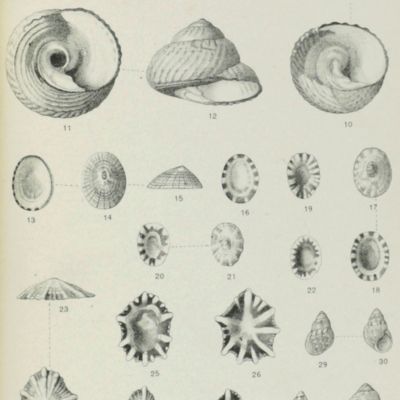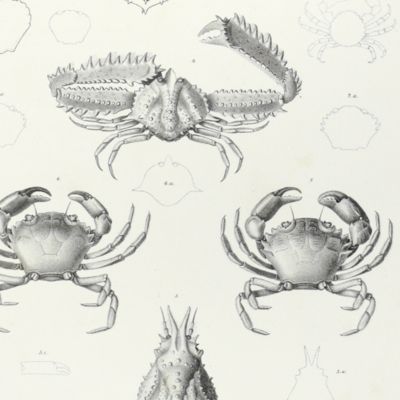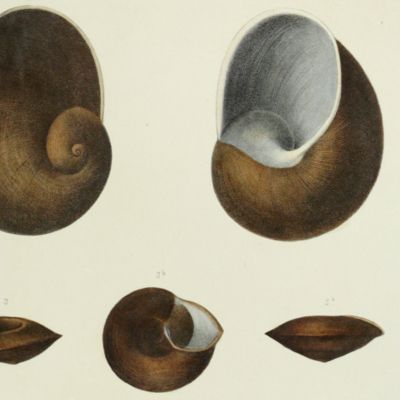Marey, É. J.
Physiologie des mouvement. Four original photographs of a jumping military horse.
France, É. J. Marey, 1895-1898. A series of four original albumen silver print plates (16.3 x 23.1; 16.4 x 23.0; 16.2 x 23.0; and 16.2 x 23.1 cm). Preserved in protective sleeves.
A fine set of four, consecutively shot, full-view photographs, with a timing clock visible, of ‘sauts du cheval’, showing a military horse jumping over a fence. An important contribution to the history of animal motion, bionics, physiology, and even cinematography because of the use of Marey’s self-invented ‘photographic gun’ (1882), which created images like those in the well-known works of Edward James Muggeridge, or ‘Eadweard Muybridge’ (1830-1904) as he preferred to be known, but actually preceding the latter’s work. And in contrast to Muybridge, the French medical doctor and inventor Étienne-Jules Marey (1830-1904, by sheer coincidence) was a scientist who knew the scientific importance of his photographs and methodologies. He was a member of the Académie nationale de Médecine and authored a well-illustrated, technical book on the flight of birds, Physiologie du mouvement. Le vol des oiseaux, based on photos made with the same technique. “He published La Machine animale in 1873 (translated as Animal Mechanism). The English photographer Eadweard Muybridge carried out his ‘Photographic Investigation’ in Palo Alto, California, to prove that Marey was right when he wrote that a galloping horse for a brief moment had all four hooves off the ground. Muybridge published his photos in 1879 and received some public attention. Marey hoped to merge anatomy and physiology. To better understand his chronophotographic images, he compared them with images of the anatomy, skeleton, joints, and muscles of the same species. Marey produced a series of drawings showing a horse trotting and galloping, first in the flesh and then as a skeleton. His work was significant in the development of cardiology, physical instrumentation, aviation, cinematography and the science of laboratory photography. Marey is widely considered to be a pioneer of photography and an influential pioneer of the history of cinema. He was also a pioneer in establishing a variety of graphical techniques for the display and interpretation of quantitative data from physiological measurement. ... He adopted and further developed animated photography into a separate field of chronophotography in the 1880s. His revolutionary idea was to record several phases of movement on one photographic surface.” (Wikipedia). This set of photos was taken between 1895 and 1898, and features a horse named Odette. Marey created a ‘movie’ by revolving the ‘photographic gun’ photos in a speed close to the actual speed of the horse. Very slight marginal creasing; the prints strong. An excellent set. DSB IX, pp. 101-103.




![image for Japanische Meeres-Conchylien. Ein Beitrag zur Kenntniss der Mollusken Japan's, mit besonderer Rücksicht auf die geographische Verbreitung derselben. I - III. [Complete].](https://schierenberg.nl/media/cache/product_thumb/75403/75403_x.jpg)
![image for Het vermakelyk land-leven. I. Deel. Den Nederlantsen hovenier, zijnde het I. Deel van het Vermakelijk Land-leven. Beschrijvende allerhande prinçelike en heerlijke lust-hoven en hof-steden, en hoe men deselve, met veelderley uytnemende boomen, bloemen en kruyden, kan beplanten, bezaeijen, en verçieren. ... Desen laetsten druk is doorgaens verbetert. [AND] De verstandige hovenier. Over de twaelf maenden van 't jaer. Zijnde het II. deel van het vermakelyk lant-leven. [AND] De medicyn-winkel, of ervaren huys-houder: zijnde het III. deel van het vermakelyk landleven.](https://schierenberg.nl/media/cache/product_thumb/73323/73323_x.jpg)

![image for Observations on the different species of Asiatic elephants, and their mode of dentition [AND] Some observations on the structure of the teeth of graminivorous quadrupeds; particularly of the elephant and <em>Sus aethiopicus</em> (by E. Home).](https://schierenberg.nl/media/cache/product_thumb/65339/65339_x.jpg)

![image for Mammiferi quaternari di Sicilia. Parte I-IV [AND] Mammiferi quaternari di Sicilia. Deposito ossifero di Castellana (Bellolampo) e della quarta grotta della Favorita. Deposito ossifero della vetta di Monte Pellegrina.](https://schierenberg.nl/media/cache/product_thumb/76133/76133_x.jpg)

![image for Collected fish papers of Pieter Bleeker. Collected and edited by W. H. Lamme. Volumes I-XIV. [Complete].](https://schierenberg.nl/media/cache/product_thumb/71215/71215_x.jpg)
![image for Iconographie ichtyologique de l'Indochine: Poissons des campagnes du "de Lanessan" (1925-1929). 1re partie. [All published].](https://schierenberg.nl/media/cache/product_thumb/16588/16588_x.jpg)

![image for [Alert voyage] Report on the zoological collections made in the Indo-Pacific Ocean during the voyage of the HMS Alert 1881-1882.](https://schierenberg.nl/media/cache/product_thumb/75370/75370.jpg)

![image for Expédition de la Célèbes Centrale. Voyages géologiques et géographiques à travers la Célèbes Centrale (1909-1910). Volumes I-III (text), atlas. [Complete].](https://schierenberg.nl/media/cache/product_thumb/38307/38307.jpg)
![image for Histoire naturelle des singes, peints d'après nature. [AND] Histoire naturelle [des singes et] des makis. [Complete].](https://schierenberg.nl/media/cache/product_thumb/71213/71213_x.jpg)
![image for Histoire générale des voyages, ou nouvelle collection des toutes les relations de voyages par mer et par terre, qui ont été publiées jusq'à présent dans les différentes langues de toutes les nations connus: ... Tome dix-septième. Histoire générale des voyages, depuis le commencement du XVme siècle, dix-septième partie. Livre septième. Vies des gouverneurs généraux, avec l'abregé de l'histoire des etablissemens Hollandois aux Indes Orientales [AND] Histoire naturelle des Indes Orientales.](https://schierenberg.nl/media/cache/product_thumb/62296/62296.jpg)




![image for Report on the scientific results of the voyage of H.M.S. Challenger during the years 1873-76 under the command of captain George S. Nares, R.N., F.R.S. and the late captain Frank Tourle Thomson, R.N. prepared under the superintendence of the late Sir C. Wyville Thomson, Knt., F.R.S., &c. and now of John Murray. Zoology. Report on the human crania and other bones of the skeletons collected during the voyage of H.M.S. Challenger, during the years 1873-76. Part I. The Crania. Part II. The Bones of the Skeleton. [Complete in two parts].](https://schierenberg.nl/media/cache/product_thumb/76280/76280_x.jpg)

![image for Almorah jay. <em>Garrulus vigorsii</em>. [J. E. Gray's <em>Illustrations of Indian Zoology</em>, plate 22].](https://schierenberg.nl/media/cache/product_thumb/74039/74039_x.jpg)

![image for Résultats des explorations zoologiques, botaniques, océanographiques et géologiques entreprises aux Indes Néerlandaises Orientale en 1899-1900, à bord du Siboga sous le commande de G. F. Tydeman, publiés par Max Weber. Livraison 1-148. [All published].](https://schierenberg.nl/media/cache/product_thumb/51581/51581_x.jpg)
![image for Beschrijving van een nieuwen zoetwater-visch van Borneo, <em>Osteoglossum formosum</em>. [AND] Beschrijving van vier oost-Indische zeevisschen behoorende tot het geslacht <em>Amphacanthus</em>. [AND] Overzigt der uit de Sunda- en Moluksche zeeën bekende visschen van de geslachten <em>Amphiprion, Premnas, Pomacentrus, Clyphisodon, Dascyllus</em> en <em>Heliases</em>.](https://schierenberg.nl/media/cache/product_thumb/70391/70391_x.jpg)









![image for Iles Taïti. Esquisse historique et géographique précédée de considérations générales sur la colonisation française dans l'Océanie. Première Partie - Deuxième Partie. [Complete].](https://schierenberg.nl/media/cache/product_thumb/70847/70847_x.jpg)
![image for Histoire naturelle Planche X. Le couguar, le linx. [Contemporary hand-coloured plate].](https://schierenberg.nl/media/cache/product_thumb/72385/72385_x.jpg)
![image for The butterflies of Malacca. [AND] On <em>Hypsiprymnodon</em>, Ramsay, a genus indicative of a distinct family (Pleopodidae) in the diprodont section of the marsupialia.](https://schierenberg.nl/media/cache/product_thumb/73535/73535_x.jpg)

![image for La Guadeloupe dediée a Mgr. Charles Philippe d'Albert Duc de Luynes ... par son trés humble et trés obeissant serviteur Le Rouge, Ingr. géographe du Roy. [map of Guadeloupe and Bourbon (La Réunion)].](https://schierenberg.nl/media/cache/product_thumb/77206/77206_x.jpg)





